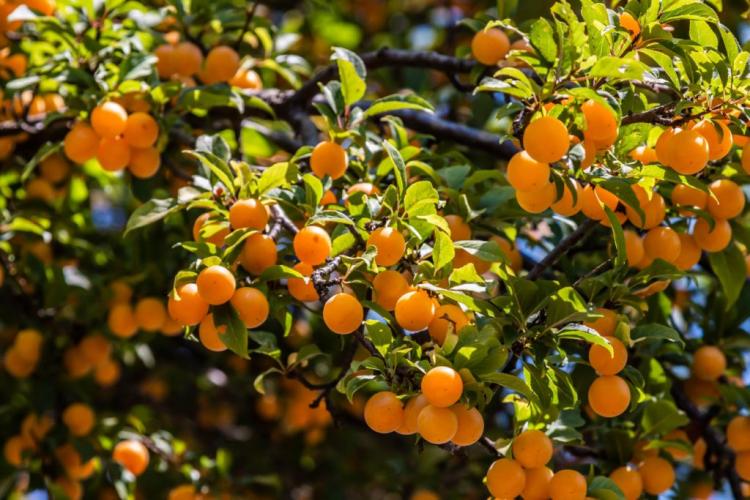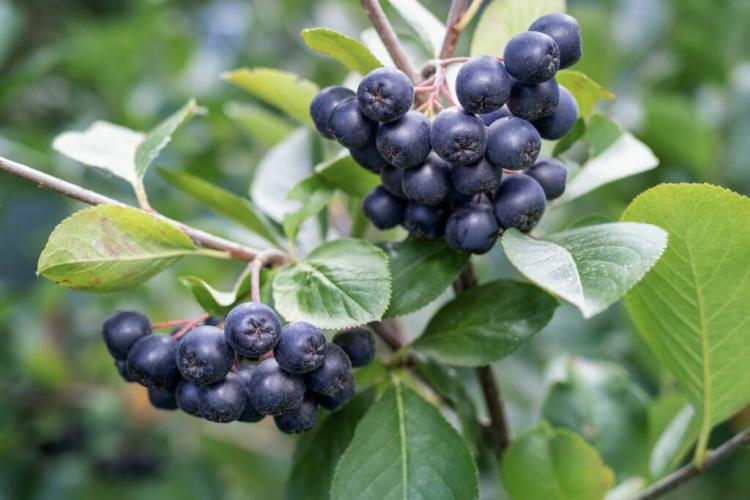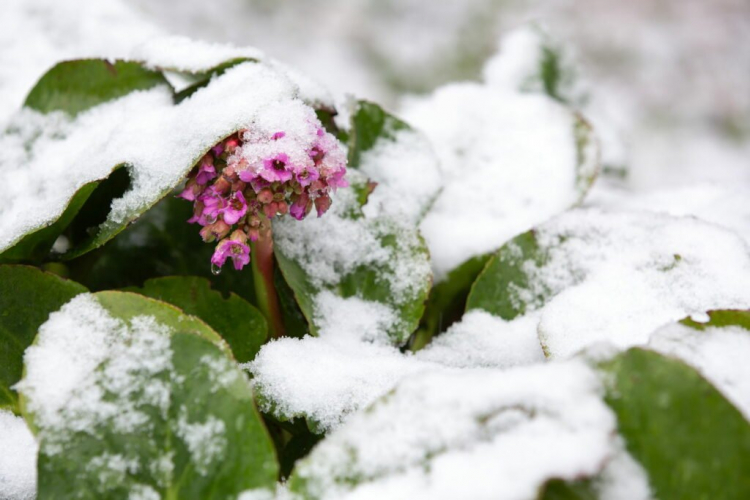Witch Hazel Planting: Expert Guide To Planting
The witch hazel heralds the start of the gardening year with strong colors. But when is the right time to plant the beautiful wood in your own garden?
The witch hazel ( Hamamelis ) is a genus of the witch hazel family ( Hamamelidaceae ), to which only five species belong worldwide. Hybrid forms from the two Asian species, the Hamamelis × intermedia, offer an incredible variety of flower colors from green, yellow, orange to red. This colorful sea of flowers breaks through the dreary winter landscape of your garden from December to March.
Despite its delicate flowers and brightly colored autumn leaves, the witch hazel is a plant that is very easy to care for. However, the lack of maintenance requirements is made up for with the planting, because long-term planning has to be made here. We will show you what needs to be considered when planting so that the noble plant feels at home in your garden.
Witch hazel: when to plant?
The best time to plant a witch hazel is in the fall, before the first frost. So in winter (as long as there is no frost), fine root hairs can form. These are important for the uptake of water and nutrients and anchor the plant in the new location. If you have purchased container goods, this can also be planted in the spring after the last frost. In the case of container plants, there is generally less to pay attention to when planting, because the plants grow much better.
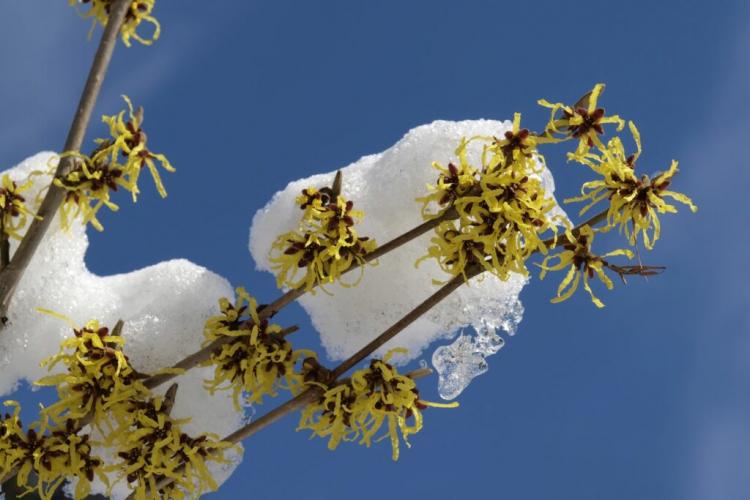
Planting witch hazel: choosing the right location
Witch hazel not only grows slowly, but it also takes time to develop roots. It takes two to three years until the plants are properly rooted. Only then is there the first visible growth spurt. In addition, a change of location is no longer well tolerated after this point in time. So think twice about whether your witch hazel can stay in place for the long term. Please note:
- Location: Sun to light shade, as protected as possible
- Soil: loose, deep, well-drained, fresh to slightly moist, very humus-rich
- Height: 2 – 4 meters
- Crown diameter: 4 – 5 meters
- Very weak roots

To escape the cold of winter, the flowers roll up in frost and unfold again in warmer temperatures. Temperatures of down to -10 ° C can be withstood without damage. However, if the temperatures are too cold, the flowers may be delayed or even not appear. It is therefore important to place the otherwise very hardy plant in a, particularly protected place from harsh easterly winds. It is even more important to pay attention to the properties of the soil, not only because transplanting should be avoided as much as possible, but because the precious shrub is very sensitive to drought, compaction, and waterlogging.
Socializing witch hazel: ideal bedding partner for the witch hazel
When choosing the green neighborhood, keep in mind that the roots of the witch hazel do very poorly against stronger ones. Therefore, after planting, do not use perennials or ground cover as underplanting, as these quickly make the witch hazel contestable for water. If you want to add a few color accents to your witch hazel until the roots have taken root, you can add small onion flowers such as ray anemone ( Anemone blanda ), grape hyacinth ( Muscari botryoides ), or snowdrops ( Galanthus nivalis ).
If a few years have passed, the roots should be so well developed that they can be socialized to a greater extent. But even with established witch hazel, attention must be paid to the compatibility of the neighboring green. Ground cover such as the small periwinkle ( Vinca minor ) and the golden strawberry ( Waldsteinia ternata ) or early bloomers such as winterlings ( Eranthis ) and elven crocuses ( Crocus tommasinianus ) are tolerated. Lung herbs ( Pulmonaria ) and fragrant violets ( Viola odorata ) are also rather weak and therefore good bedding partners.
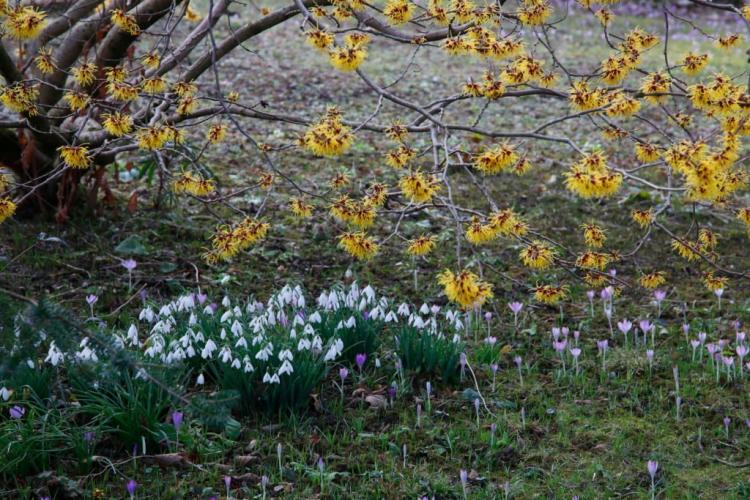
Note: The flowers are the first food source for bees and bumblebees in an otherwise barren environment. Therefore, the witch hazel is an ideal plant for bee pastures. You can find our top 10 bee-friendly plants here.
Planting Witch Hazel Properly: The Most Important Steps
The witch hazel should feel comfortable in its location for as long as possible. A lot has to be taken into account when planting. Good preparation of the soil is, therefore, an absolute must for the otherwise so undemanding crops. In this way, you give the weakly competitive plants an optimal environment in which to put down roots. When planting a bare-root witch hazel, the roots must be soaked in water for about an hour immediately beforehand. Then the roots are carefully loosened and separated. These preparatory steps are not necessary with container plants. Here you can start planting right away.
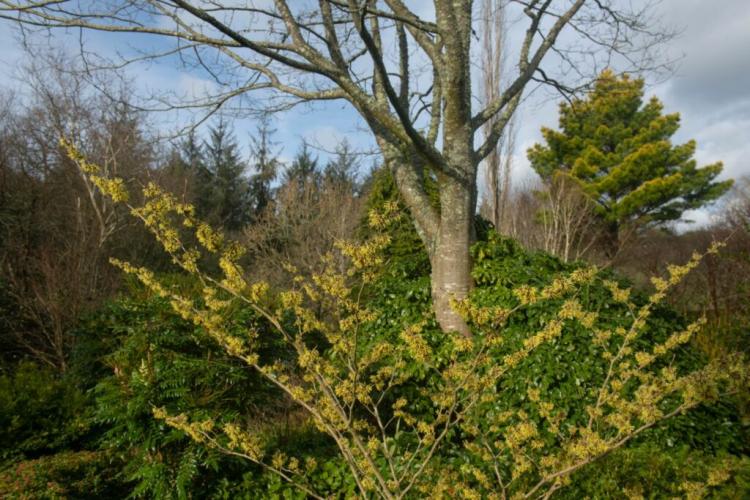
For a sufficient supply of nutrients, you should enrich the excavated soil with which the plant will later be covered with nutrients. Organic universal fertilizer, for example, is ideal for this. If the soil is particularly barren at the desired location, you can also use high-quality and nutrient-rich organic soil.
Plant witch hazel at a glance:
- Loosen the soil well
- Planting hole: about twice as large as the root ball
- Enrich the excavated soil with compost or long-term fertilizer and loosen it well again
- Place the plant straight into the planting hole
- Only set the plant so deep that the ball of the pot can still be seen on the surface
- Fill the planting hole with prepared soil
- Cover the root area with bark mulch
- Do not work the soil after planting
You might so like:


